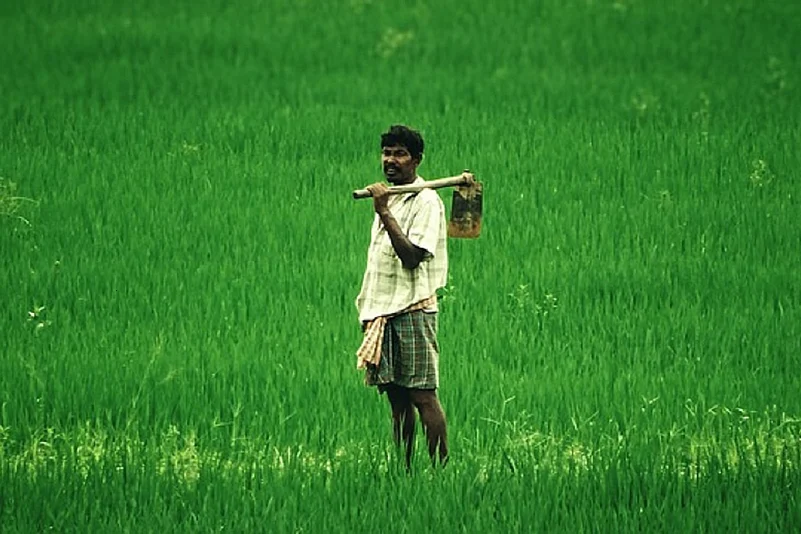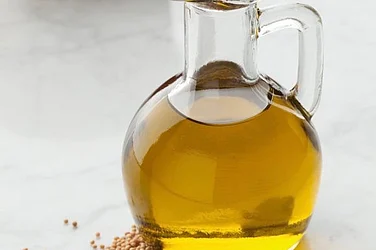Many developed countries of the world are not only prospering with better technology and management in the agriculture sector, but in some – like in the European Union, Canada, and Israel – there has been significant growth in farmers’ income. India is also on the same path. When we walk together – with one intent, with one thought, and work together on one project – the path to prosperity is paved. Remember, in our childhood, we used to listen to the story of a farmer, its title being “United We Stand”. The moral: In unity there is progress – “bundled together, the sticks could not be broken, but when separated, it could be snapped one by one”. Similarly, smallholding farmers will have to till together, this is the call of the times.
The size of a farmer's land holdings in India has decreased from 2.3 hectares in 1970 to 1.08 hectares by 2015-16, and the area under cultivation has become much smaller in the last 40 years. According to the Agriculture Census of India, the number of small acreage farmers and landless farmers has reached around 86%, i.e. the number of marginal farmers has increased by more than 16% in the last 40 years.
Due to lack of better agricultural technology for small and medium farmers and under the pressure of the moneylenders in the market, farmers were getting poorer. According to the 2011 census, the number of landless agricultural laborers in India has exceeded the number of farmers. There are two categories dependent on agriculture: the marginal farmer and the middle level farmer, and the other is the landless agricultural labourer.
Having almost crossed over 55% of agricultural labour, the number of landless agricultural labourers is now around 16 crores in the country. And numbering around 12 crores, tenant farmer comprises about 45%.
Reduce the miseries of small marginal farmers, landless agricultural labourers, and medium farmers – this is the vision of Prime Minister Modi. If farmers are organized, they can sell the produce in the market in an organized way. Similarly, they can organize themselves to use crops and certified seeds on the basis of new scientific research.
Together with better irrigation system, use of new agricultural tools, proper arrangement for transportation and qualitative management, they can escape the demonic forces of the market. If they are organized better in the market, they can get better value for produce. If we look at the Modi government’s policies closely, we will find that one hand, there are better strategies developed for farmers’ welfare and on the other, there is government system in place for support. We stand to gain even if after putting everything at stake, we keep the farmer and farming alive. This is what Prime Minister Modi believes.
Israel is one of the smallest countries in the world – barely equal to the area of Haryana – and its population is only nine million. Yet, it holds an important position in agricultural income. The reason is that it implements the best technology, where even with only 20% of its land being naturally arable, Israel has made its place among 10 largest producing countries of the world. This was possible only through cooperative farming, improved techniques, and appropriate use of water, and linkage of farmers to markets through cooperatives. Now marginal farmers in India will have to move ahead with the agricultural policies of the Government of India. Along with traditional farming, we have to adapt to new methods – only then will the farmers progress. The Modi government has formulated certain ambitious schemes for the benefit of marginal farmers. How can the fact be ignored that a farmer needs to be self-reliant? The question needs to be asked, why was it being avoided in the past?
The Modi government has tried to minutely analyse why farmers remain poor even today. The government has now set a target of 2022 to double farmers’ income. Now we have to move ahead with the new set of parameters for progress.
Government of India’s scheme of Farmer Producer Organization (FPO) needs to be properly implemented across the country for betterment of farm and farming in today’s India. This has been taken up with utmost seriousness. And the positive results are showing. The Modi government has set a target of 2022 for better operations and progress by creating of 10,000 FPOs.
Farmer Production Organization
Any farmer can be part of the FPO scheme. It is very easy to form an organization or be a member. The Modi government has prepared the framework making FPO a simple process. All we need is a determination to establish it and to cooperate.
The details are available on the website of the local Deputy Commissioner's office as well as on that of the Ministry of Agriculture, Government of India. In order to form an FPO, there should be a minimum of 300 farmers. Among them, the number of marginal farmers, small holding farmers should be about 50%. Farmers holding land above 2.5 acres can also be made members. Individual contribution towards becoming a member is only Rs. 2,000.
There is provision for Equity Grant in the form of matching grant up to Rs. 2,000 per farmer-member of FPO subject to maximum limit of Rs. 15 lakh fixed per FPO. Under the scheme, financial support up to maximum of Rs. 18 lakh per FPO or actual, whichever is lesser, is to be provided during three years from the year of formation.
The government will also provide certain benefits to the FPO in the initial years. These include expenses for employees’ salary, management, operations, financial, office expenses, travel, meeting etc. and even the amount required for furnishing.
Along with this, the Government of India provides assistance of Rs. 2 crore to each FPO in the form of bank credit guarantee cover up to 75% for eligible projects by the bank. Also, for bankable projects of up to Rs. 1 crore, a credit guarantee of up to 85% is provided as assistance in the form of cover.
How FPO will benefit marginal farmers
Agriculture and farming community should have overall benefit, it should be made entrepreneurial along with farming. Government of India has a plan to develop them economically by making 10,000 FPOs.
By getting organized through FPO, small and marginal farmers will not only get a market for their produce, but it will become very easy for them to buy better fertilizers, advanced seeds, certified medicines, new technology agricultural equipment etc.
Other services like transportation etc. will also be available at cheaper rates and they can be freed from the web of middlemen.
When a farmer with a normal small holding goes to the market with his produce and is alone, he does not wield power to buy and sell; he has to sell his produce under the pressure of middlemen in the market.
For example, if a farmer with small land holdings produces maize, and he takes it to the market, he has to sell it under pressure at a price offered by traders, middlemen, moneylenders and companies sitting in the market and that's it! The companies and traders have varied used for maize by making corn flakes, flour etc. through processing unit and market it thus making huge profits.
Now, the same thing can be done by the FPO, which is organized and formed by the farmers. Thus, farmers will earn huge profits which will open the door to their prosperity.
FPO also secures the future of farmers, this scheme also helps in insuring crops to reduce post-harvest losses.
The FPO scheme will contribute significantly to increasing the income of the farmers through improved processing systems and management systems.
District Level Business Organization (CBBO)
The formation and promotion of FPO is entrusted to Cluster Base Business Organization (CBBO), which has the responsibility for the formation of 10,000 FPOs on the ground across the country.
At least five experts, from the fields of processing, horticulture, and service sector, help in the progress of FPO. It also provides support in information technology, legal, accounting, etc.
The CBBO support FPO in registration, training its board of directors as well as providing scientific and technical know-how.
I can say with conviction that based on yield, if they want, FPOs can form their own district level, state level, or national level organizations and forge relationships and groups with common interests. Assessing the requirements and the success achieved, FPOs can improve product and production, create better food processing facilities, establish themselves as a better brand through best possible packaging and marketing across the country.
This way it can establish itself in both domestic and international trade with quality products. It will also be able to make a significant contribution to the domestic production which will directly benefit the marginal farmers and their families. Small Farmers Agribusiness Consortium
Small Farmers Agribusiness Association and National Bank for Agriculture and Rural Development are working continuously towards providing financial assistance, and the two together accounts for the registration of more than 5,000 FPOs. The Modi government wants to increase the number further.
FPOs should work well in rural areas. Along with the government, FPOs need the enthusiastic support from Non-Government Organizations, Panchayats, and its representatives too. Through the FPO scheme, the Modi government intends to pay special attention to women farmers, women self-help groups, scheduled caste, tribes, and other economically weaker sections. This so that together we can fulfil the hopes and aspirations of the farmers. If FPOs can be managed well in rural areas, then no one will be able to stop the empowerment of villages.
There will be a spectacular and qualitative improvement of economy in rural areas through FPOs. The purchasing power of the people will increase, the youth will get employment opportunities in the village itself. When food processing units are established in villages by the FPOs there will be a need for workers, thus youth again will get endless means for employment at the local level itself. Perhaps the day is not far when the rural youth will not migrate to cities, because better employment resources will be available to him in his village.
In order the Government of India set up 10,000 FPOs, to encourage them in setting up and operating in the country, Prime Minister Modi launched this as a central scheme on 29 February 2020 in Chitrakoot (Madhya Pradesh). Operations and guidelines of this new scheme were approved by the Minister of Agriculture.
The Modi government is going to spend Rs. 5,000-crore for FPOs in the next five years. This amount can be increased further if needed. After achieving the target of 10,000 FPOs, more will be required in a large country like India; it may be possible to cross approximately a one-lakh-mark. Along with this, state-level consultative committees and monitoring committees have also been constituted by 35 States and Union Territories for operating FPOs.
The role of the State Governments is very important in effectively running this important scheme and we hope that they will help in doubling the income of the farmers with the support of the Central Government. If marginal farmers and educated youth of rural areas together form FPO, then they can change the looks and the future of their village within a few decades.
If I stand alone then I am incomplete. If you are alone then you are incomplete. Similarly, marginal farmers by themselves are alone, incomplete. If we all come together, then perfection can be achieved and in the coming years you will see that our country will be a nation of prosperous farmers. I can confidently say that in the coming decades, FPOs will set an important milestone in the economy of rural India.

(The writer Rajkumar Chahar is a Member of Parliament and National President of the Bharatiya Janata Party Kisan Morcha. Views expressed are personal)
















